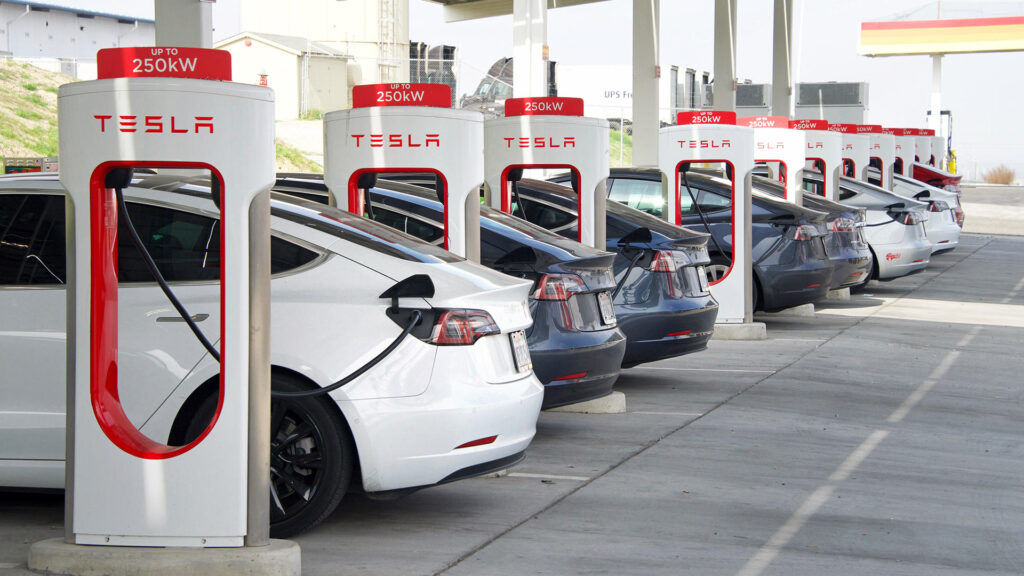After a series of price cuts in 2022 and again in the first quarter of 2023, Tesla has now announced a further set of reductions from its head office. How many territories will be affected by the new drops is unknown, but Elon Musk seems entirely focused on revenue and expansion now. Are there any downsides to having cheaper Teslas in the market?
Economic levers are few and far between, often without a precise connection between cause and effect. What is certain, is that if you take one of the world's most popular electric car brands and make the product cheaper – during a boom in EV sales – then your new car revenues will be boosted.
Recently, we reported that the Tesla Model Y was now top of the sales charts in the UK for March. Two versions of this car will be subject to the new pricing scheme, with the Model Y Performance and Long Range models down by $3,000 (around £2,400).
At the same time, perennial favourite the Model 3 is seeing its entry level, rear wheel drive option down by $2,000 (£1,600). In the States, that puts the Model 3 at just $39,990 – or £32,000 if that price were directly translated in to British Pounds.
One way of looking at price cuts, is to imagine that Tesla is ‘buying something' with its money. In this case, market share and revenue. Price cuts in 2022, created an uplift in unit shipments of almost 18%. The smaller price drops at the start of 2023, have already increased shipments by almost 5%.
So how does that translate into financial figures? Early analysis shows that Elon Musk has sacrificed just under 2.5% of his company's average profit in order to buy a rise in revenue of just under 25%.
Another financial measurement comes in the form of Tesla's stock price. This was $108 a the start of January and is now closer to $185. That's a phenomenal rise in value – although that number needs to be considered next to Tesla's all time high of $407 in November 2021.
Will these price cuts be reflected in every market? That is uncertain. Many of the previous cuts have had an effect in China, South Korea and Europe – but the drops are not always replicated 1-to-1 across borders.
So, are there downsides to having cheaper Tesla models available to consumers? Definitely if you are an existing owner, looking to sell/part-exchange for a new car. Having the price of a new Tesla fall, will definitely mean you get less on your next deal.
There is also the ‘downward price pressure' effect on other manufacturers – who are often compared to Tesla as an ‘industry standard' for advanced EV technology and performance. Price pressure from Tesla's move could mean lower pricing from other EV makers – although that would have to be seen as a benefit for drivers, surely?
We have already addressed whether these on-going price cuts mean that Tesla is in trouble, and the UK sales charts indicate that British EV drivers are very happy with the additional value.
The ‘killer move' for the European market, would be the launch of the much heralded ‘Model 2' – where Tesla would finally offer a highly affordable, compact design with a price tag closer to £20,000.
In an exclusive WhichEV poll, over 85% of car drivers surveyed told us that the launch of a £20,000 battery electric vehicle with solid range, would be enough to make them switch from petrol/diesel across to an EV.
While the Semi and CyberTruck may get the cool headlines, the launch of a Model 2 would be a 2CV/Golf moment in the EV market.
Let us know what you think about Tesla cutting prices over on LinkedIn or Facebook.
